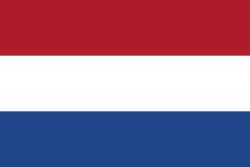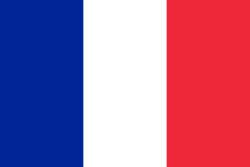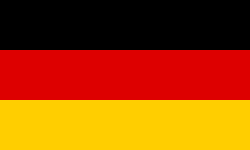Tensile fabric has become one of the most versatile building materials in modern architecture, widely used for canopies, shading systems, and large-scale structures. Its flexibility, durability, and light-transmitting properties make it ideal for both aesthetic and functional applications. For global buyers, sourcing tensile fabric in China presents an unmatched opportunity — combining advanced technology, extensive material choices, and competitive pricing.
China’s tensile fabric manufacturers have mastered the art of producing high-performance fabrics such as PVC-coated polyester, PTFE fiberglass, and ETFE film. Whether you’re developing a commercial walkway canopy, a sports facility, or a hospitality project, tensile fabric China suppliers can provide reliable, customized solutions that meet international quality standards.
In this guide, we'll explore everything you need to know about sourcing tensile fabrics from China — from material selection and quality inspection to working with reputable manufacturers who can turn your design vision into reality.
Why Choose China for Tensile Fabric Sourcing?
China is a major manufacturing country with a strong infrastructure for making textiles and architectural fabrics on a large scale. A lot of Chinese suppliers make fabric buildings, tensile membranes, and PVC-coated canvases that can be used outside. Here are a few reasons why buyers often choose China as their sourcing partner:
- Competitive Costs: Because China have large factories and extensive supply chains, Chinese tensile canvas manufacturers offer better pricing than suppliers in other parts of the world
- Diverse Selection: China produces a wide range of tensile fabrics, including waterproof, UV-resistant, flame retardant, and translucent materials.
- Customization Possibilities: Most suppliers will take custom orders based on exact specifications for fabric weight, color, coating type, and size.
- Production Speed: Efficient factory setups help achieve short lead times, crucial for projects with tight schedules.
- Export Experience: Many companies have been exporting tensile canvases around the world for years, so they know how to follow international standards for packaging and shipping.
The Manufacturing Hubs for Tensile Fabric in China
Several regions have developed strong reputations for producing tensile canvases and related metalwork:
- Foshan, Guangdong: Known for modern tensile structure fabrication, steel components, and canopy systems.
- Suzhou, Jiangsu: Specializes in high-quality PTFE and ETFE membranes for large-scale projects.
- Hangzhou, Zhejiang: Offers mid-range PVC and PVDF tensile materials for architectural and commercial applications.
- Shanghai: Home to companies focusing on design, engineering, and export coordination for tensile projects worldwide.
These hubs provide both off-the-shelf and customized solutions, supported by experienced engineers who understand export requirements.
Types of Tensile Fabric Used in Construction
Chinese manufacturers keep a variety of tensile canvas materials on hand that are good for different uses. Knowing what kinds of fabric are available can help you choose the right one for your project's needs:
- PVC Coated Polyester: This is the most common material for tensile structures because it is strong and can withstand the weather. Usually fireproof and comes in a range of colors.
- PTFE Fabric: This option is more expensive but lasts longer and has self-cleaning properties.
- HDPE Mesh: This material is light and breathable, making it great for shading without completely blocking airflow.
- Polyethylene Canvas: A cheap choice for temporary buildings, but not as strong in bad weather.
- Silicone Coated Glass Fiber: This material is strong and see-through, so it is used in high-end building projects.
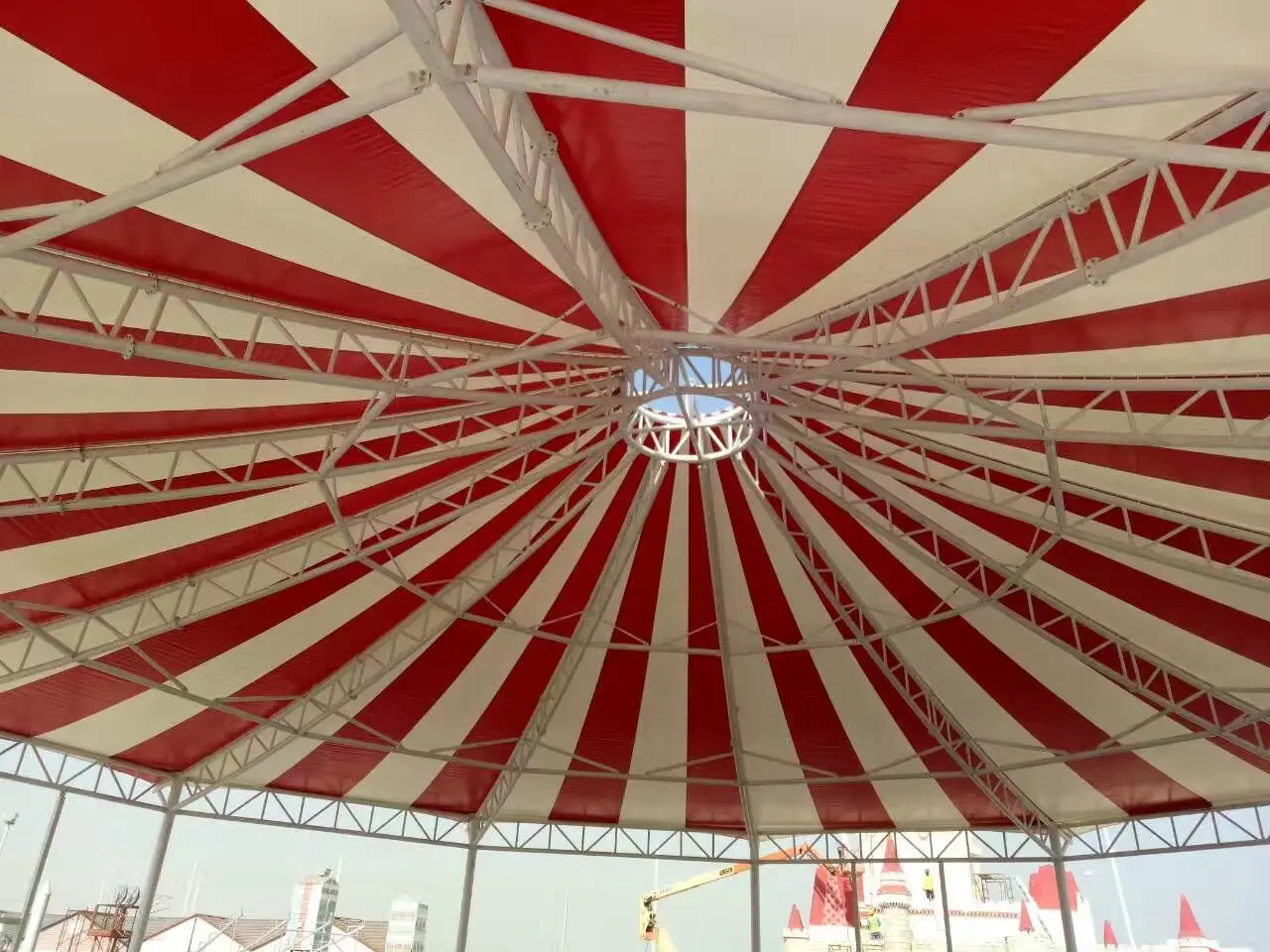
Popular Types of Tensile Canvas Structures
There are many different uses of tensile canvas. Here are the types you'll most likely come across when buying from China:
- Shade Sails: These lightweight, triangular or rectangular membranes are popular for parks, playgrounds, restaurants, and residential areas. Shade sails are easy to put up and take down, and they protect you from UV rays while aesthetically good.
- Canopy Structures: Canopies are a frequent choice for entrances, parking areas, and outdoor seating. They balance protection and open-air aesthetics. Buyers can select waterproof or semi-permeable fabrics based on their climate needs.
- Stadium Roofs and Large-Span Structures: PTFE and ETFE fabrics are often used for big building projects because they are strong and last a long time. Many Chinese companies have experience producing and installing tensile roofs for sports facilities, airports, and exhibition halls.
- Walkway and Pavilion Covers: Public walkways, resorts, and leisure parks often use tensile canopies to create shaded, visually appealing paths and gathering areas. With flexible forms and customizable designs, these structures blend functionality with creative expression.
- Membrane Facades: Architects increasingly use tensile membranes as building facades, combining aesthetics with thermal efficiency. Manufacturers in China can provide customized shapes and patterns, supported by 3D modeling and digital cutting tools.
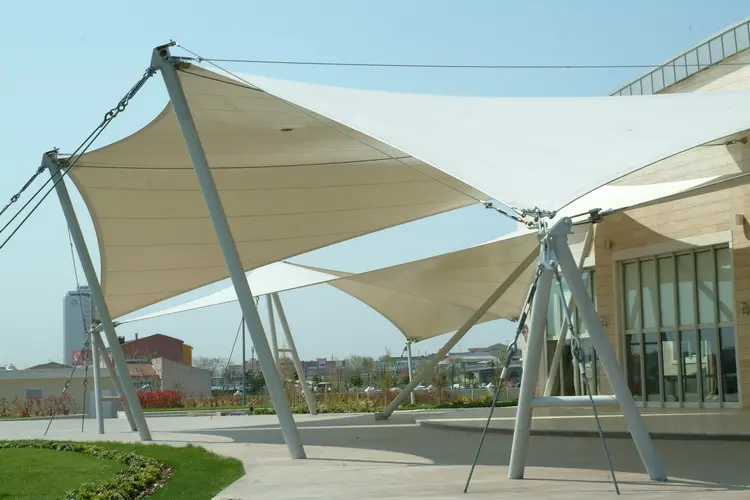
Applications of Tensile Fabric in Architecture
Tensile structures can be used in many different fields because they are so flexible:
- Hospitality: Resort pavilions, poolside shade sails, and outdoor lounges.
- Commercial Spaces: Shopping center atriums and parking covers.
- Public Infrastructure: Walkways, transport terminals, and stadium roofs.
- Residential Projects: Garden canopies and patio covers.
- Education: School courtyards and sports facilities.
These applications showcase how tensile canvases blend practicality, aesthetics, and sustainability in modern construction.
Factors to Consider When Buying Tensile Fabric from China
Choosing the right supplier and ensuring consistent quality are essential to achieving the best results. Here are the main factors you should evaluate before placing an order:
- Material Certification and Testing: Ensure that the fabric complies with international standards such as EN 13501 (fire resistance) and UV protection certifications. Some manufacturers also provide tensile strength test reports and weathering resistance data. For structural components, check compliance with EN 1090 standards for steel and aluminum fabrication — a key requirement for projects in Europe.
- Quality Control and Inspection: Request detailed photos or videos of the production process. If possible, conduct third-party inspections or factory audits. Consistent welding, proper edge finishing, and accurate tensioning are critical indicators of quality. Some suppliers also hold China’s CQC certification showing adherence to national product safety and quality standards.
- Customization and Design Support: Leading Chinese factories offer engineering and design assistance, including 3D modeling, load calculations, and membrane patterning. This is particularly useful for projects with unconventional shapes or complex structural demands.
- Durability and Warranty: Ask about expected fabric lifespan and available warranties. High-quality PTFE and PVDF fabrics can last over 20 years with minimal maintenance, while standard PVC membranes may offer 8–12 years of service.
- Lead Time and Logistics: Shipping timelines vary depending on project scale and customization. Most suppliers provide estimated production schedules upfront. Partnering with a sourcing company in China, such as Guangzhou Sourcing, ensures smooth coordination from factory to port.
- Pricing and Payment Terms: Always request detailed quotations that include material cost, frame structure, installation accessories, and freight. Compare offers from at least three suppliers, balancing price with quality, warranty, and service responsiveness.
The Process of Sourcing Tensile Fabric from China
Following a clear step-by-step process makes sure that the sourcing process goes smoothly:
- Research and Identify Suppliers: Look through trusted sites like Made-in-China, Alibaba, or sourcing agencies that focus on construction materials.
- Request Catalogs and Samples: Review fabric options and test samples for tensile strength, colorfastness, and finish.
- Assess Manufacturing Capabilities: Check the supplier's equipment, project experience, and export history to see if they can handle the project.
- Define Technical Specifications: Give clear measurements, design drawings, and performance needs.
- Negotiate Contracts and Terms: Set the prices, payment methods, and delivery dates.
- Arrange Inspections and Shipping: Before shipping, do a pre-delivery inspection or hire a third-party service to check the quality.
- Coordinate Logistics and Customs: Work with freight forwarders who know how to handle exports from China.
By following this structure, buyers can cut down on mistakes, avoid delays, and make sure that the results are the same on all of their projects.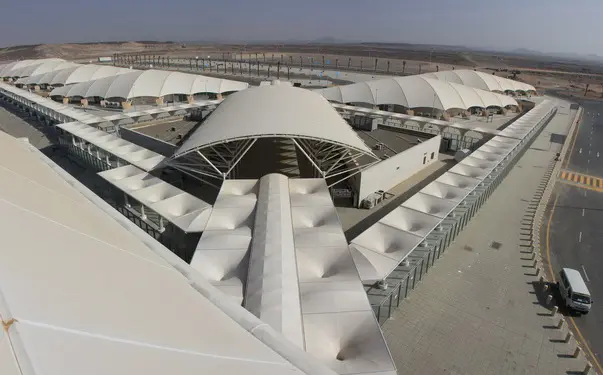
Common Challenges and How to Address Them
While sourcing tensile canvases from China offers many advantages, some challenges may arise:
- Language Barriers: Use clear, simple language and visual aids like photos and measurement charts. Platforms that help with translation can make communication better.
- Quality Variations: To get the best balance between cost and quality, choose suppliers in the middle to high range and test samples thoroughly.
- Lead Time Risks: Make sure to leave some extra time in your schedule for customs clearance and unplanned factory delays.
- Intellectual Property Protection: Use contracts specifying confidentiality and originality, especially if you require custom fabric designs or coatings.

Why Partner with Guangzhou Sourcing
Sourcing tensile fabric in China can be challenging, but Guangzhou Sourcing makes the process simple and reliable. With extensive experience in the Chinese building materials market, we connect global buyers with trusted tensile fabric manufacturers who meet international quality and design standards.
Our on-site team personally visits factories, checks samples, and verifies certifications such as CQC, ISO, and EN 1090, ensuring every product meets your expectations for strength and durability.
We manage everything — from supplier selection and price negotiation to inspection, packaging, and shipping — giving clients a seamless and transparent sourcing experience.
By partnering with Guangzhou Sourcing, you gain access to competitive factory prices, dependable delivery, and professional support at every stage. Whether you’re sourcing tensile fabric for canopies, facades, or shading systems, we help you achieve quality results with confidence in China’s tensile fabric industry.
Conclusion
Sourcing tensile fabric in China offers a strategic advantage for architects, contractors, and developers seeking high-quality materials at competitive prices. The country’s manufacturing strength, combined with innovation in material technology and design flexibility, makes China tensile fabric manufacturers some of the most trusted partners worldwide.
Whether your project requires tensile membranes for outdoor canopies, shading systems, or structural roofing, Chinese suppliers can deliver precision-engineered solutions that balance beauty, strength, and cost-effectiveness.
By partnering with a trusted sourcing company like Guangzhou Sourcing, you gain access to verified tensile fabric suppliers in China, comprehensive quality inspections, and efficient logistics support — ensuring your project achieves both visual impact and long-term performance.

